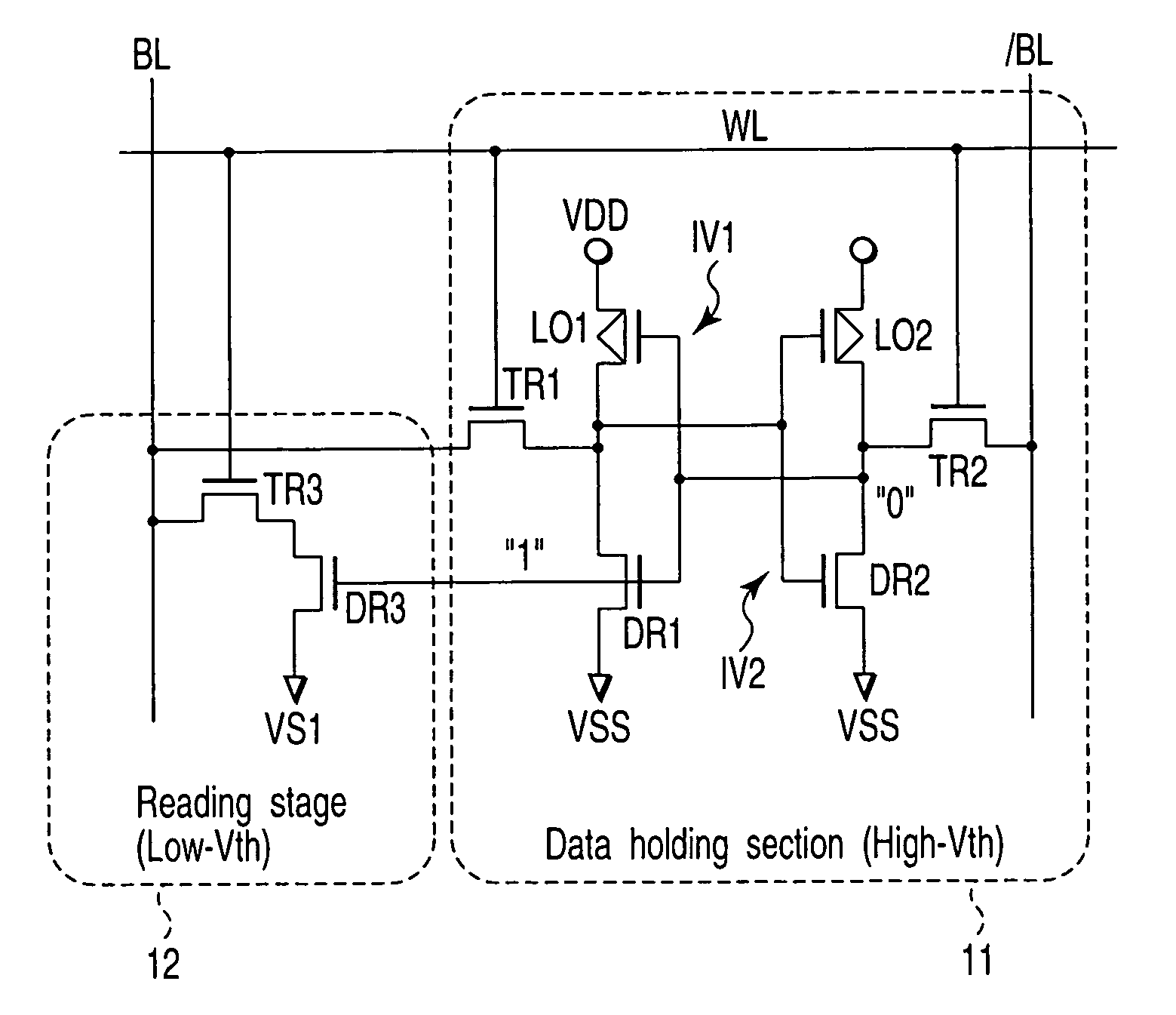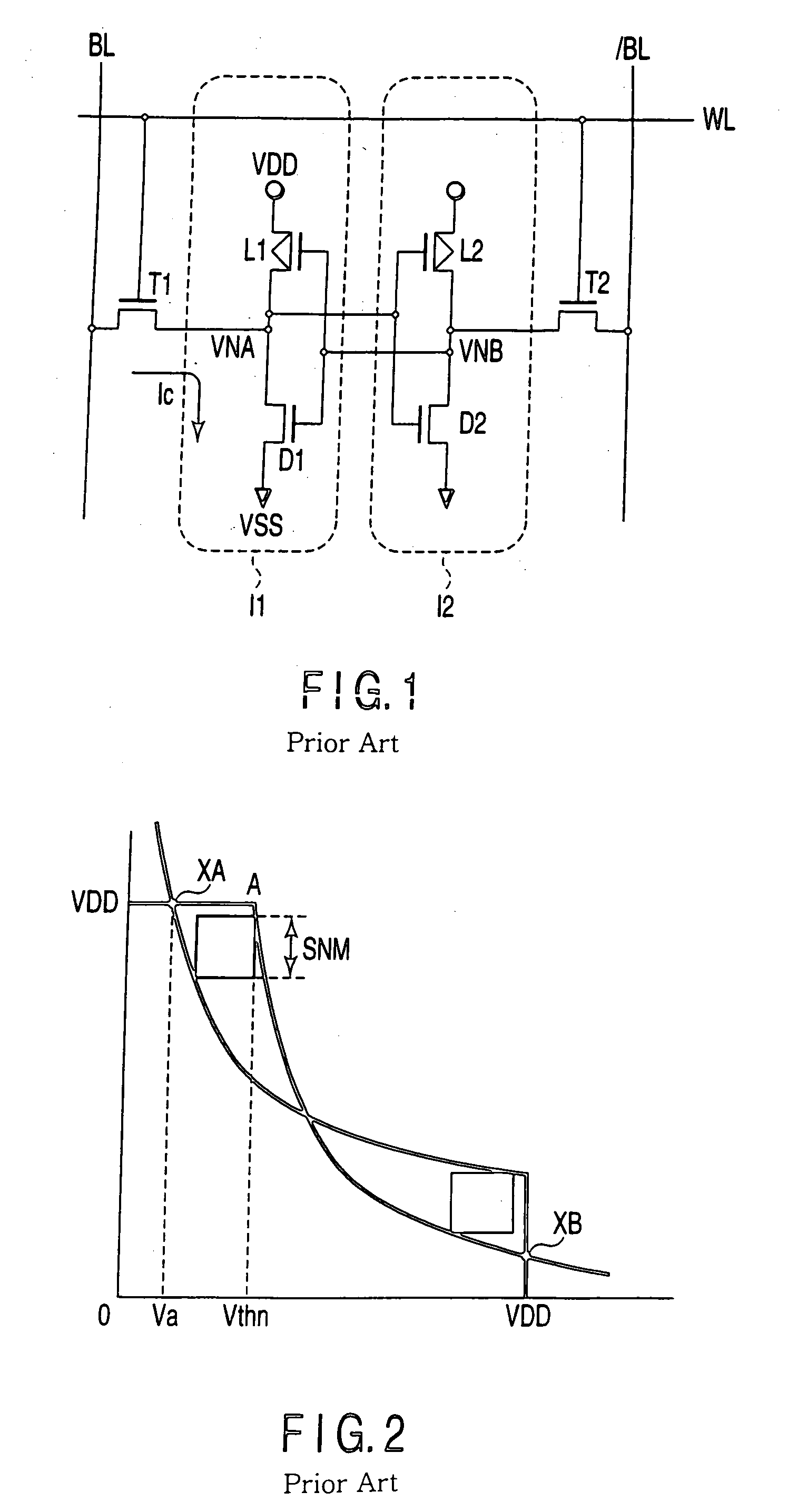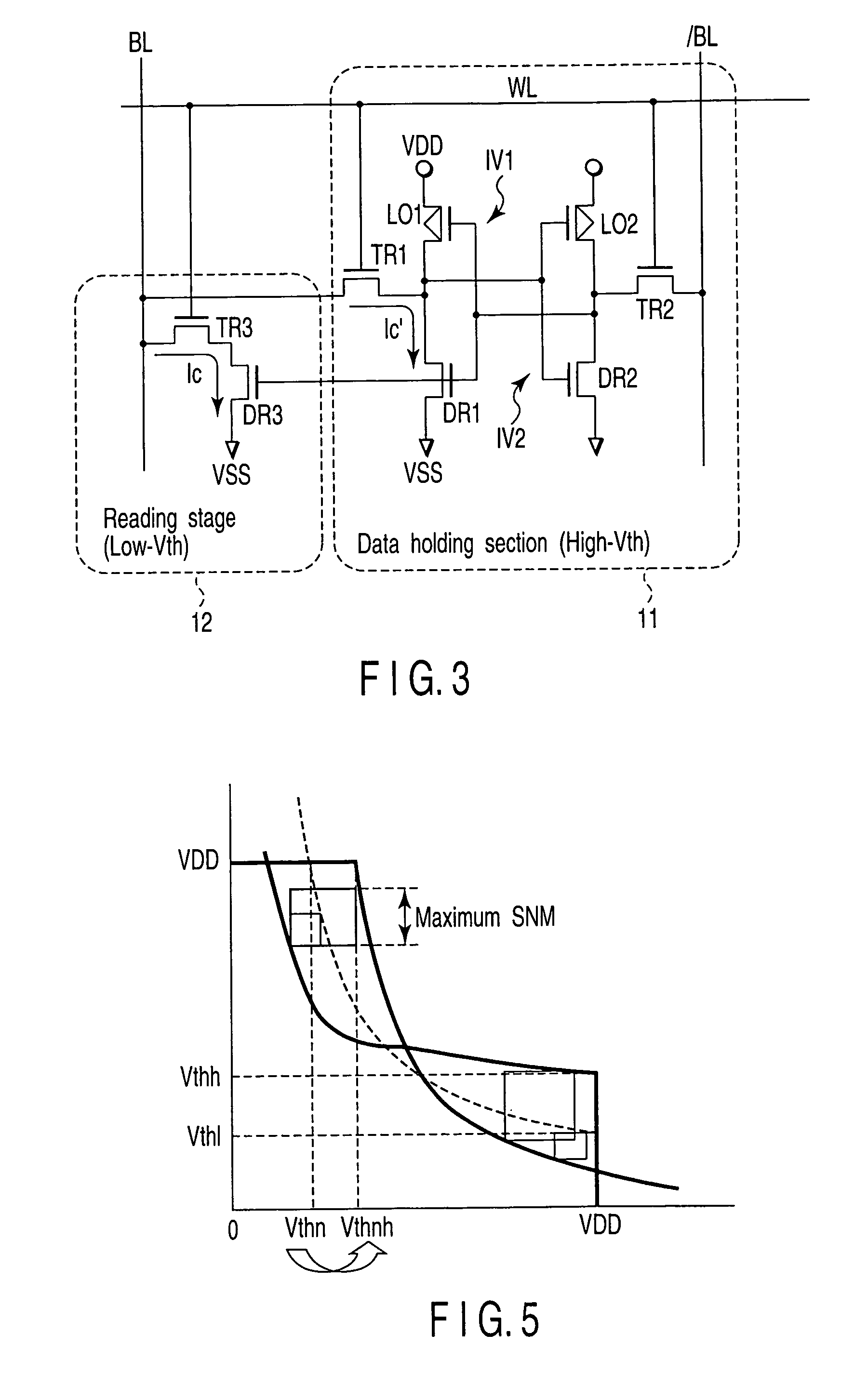Semiconductor integrated circuit device having static random access memory mounted thereon
a technology of integrated circuit devices and static random access memory, which is applied in static storage, digital storage, instruments, etc., can solve the problems of increasing memory capacity and a lowering of voltage, data destruction due to power supply voltage noise in the chip becoming more difficult to occur, and narrowing
- Summary
- Abstract
- Description
- Claims
- Application Information
AI Technical Summary
Benefits of technology
Problems solved by technology
Method used
Image
Examples
first embodiment
[0032
[0033]First, a semiconductor integrated circuit device having a static random access memory of a first embodiment of the present invention is explained with reference to FIGS. 3 to 10.
[0034]FIG. 3 is a circuit diagram showing the configuration of an SRAM cell according to the first embodiment. The SRAM cell includes a data holding section 11 configured by six transistors and a reading stage 12 configured by two N-channel MOS field effect transistors (which are hereinafter referred to as NMOS transistors). The data holding section 11 includes a first inverter IV1, second inverter IV2, first transfer gate transistor TR1 and second transfer gate transistor TR2. The reading stage 12 includes a third transfer gate transistor TR3 and read driver transistor DR3. The first inverter IV1 includes a first load transistor LO1 and first driver transistor DR1 and the second inverter IV2 includes a second load transistor LO2 and second driver transistor DR2.
[0035]The first, second load transi...
second embodiment
[0067
[0068]Next, a semiconductor integrated circuit device containing an SRAM according to a second embodiment of the present invention is explained. The same reference symbols are attached to the same portions as those in the configuration of the first embodiment.
[0069]FIG. 11 is a circuit diagram showing the configuration of an SRAM according to the second embodiment of the present invention. In the first embodiment shown in FIG. 3, voltage supplied to the source terminal of the read driver transistor DR3 is fixed at the reference voltage such as the ground potential. On the other hand, in the second embodiment, voltage VS1 supplied to the source terminal of the read driver transistor DR3 is not fixed at the reference voltage such as the ground potential. Further, the voltage is selectively set at the ground potential or voltage such as the power supply voltage VDD higher than the ground potential. The other configuration is the same as that of the first embodiment.
[0070]The sourc...
third embodiment
[0071
[0072]Next, a semiconductor integrated circuit device containing an SRAM according to a third embodiment of the present invention is explained. The same reference symbols are attached to the same portions as those in the configuration of the first embodiment.
[0073]FIG. 12 is a circuit diagram of an SRAM cell according to the third embodiment of the present invention. The SRAM cell of the first and second embodiments is an 8-transistor type cell based on the one-side bit line read system, but the SRAM cell of the third embodiment is a 10-transistor type cell based on the both-side bit line read system. A reading stage 13 is also provided on the bit line / BL side to configure an SRAM cell configured by ten transistors. The reading stage 13 additionally includes a fourth transfer gate transistor TR4 and read driver transistor DR4. The cell area of the SRAM cell is increased by 40% in comparison with that of the conventional 6-transistor type SRAM cell, but the read operation of hi...
PUM
 Login to View More
Login to View More Abstract
Description
Claims
Application Information
 Login to View More
Login to View More - R&D
- Intellectual Property
- Life Sciences
- Materials
- Tech Scout
- Unparalleled Data Quality
- Higher Quality Content
- 60% Fewer Hallucinations
Browse by: Latest US Patents, China's latest patents, Technical Efficacy Thesaurus, Application Domain, Technology Topic, Popular Technical Reports.
© 2025 PatSnap. All rights reserved.Legal|Privacy policy|Modern Slavery Act Transparency Statement|Sitemap|About US| Contact US: help@patsnap.com



